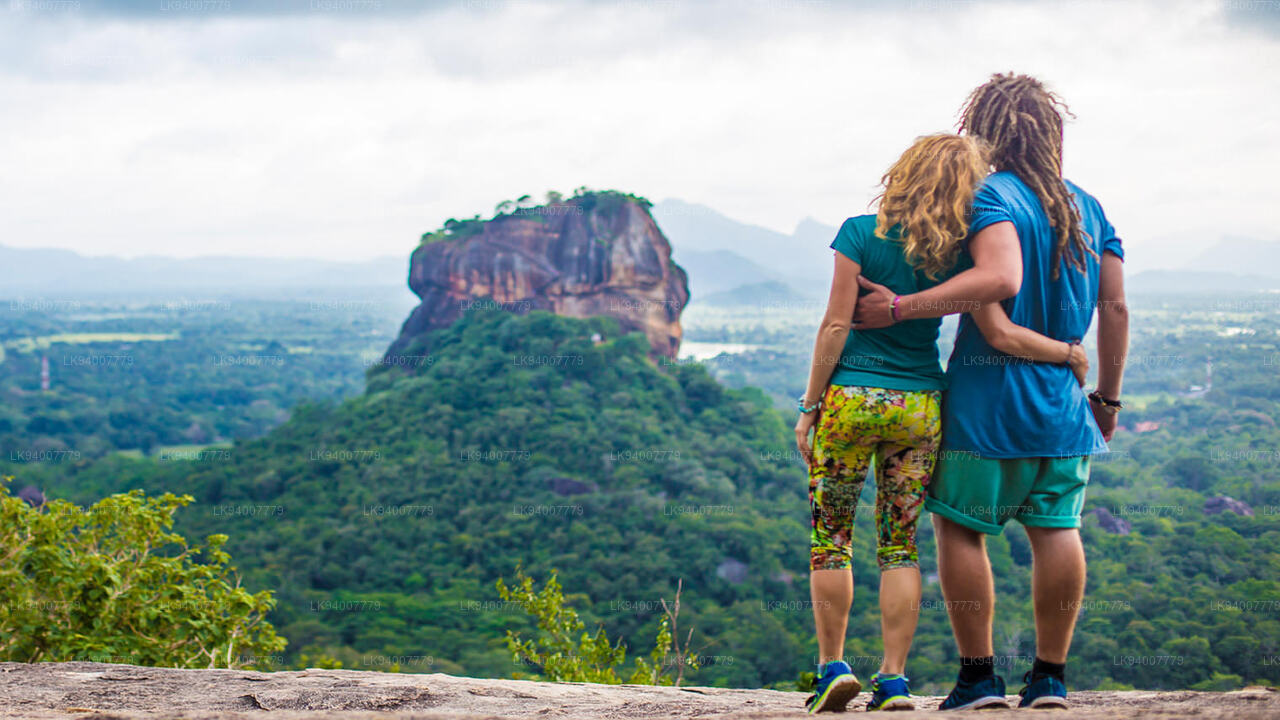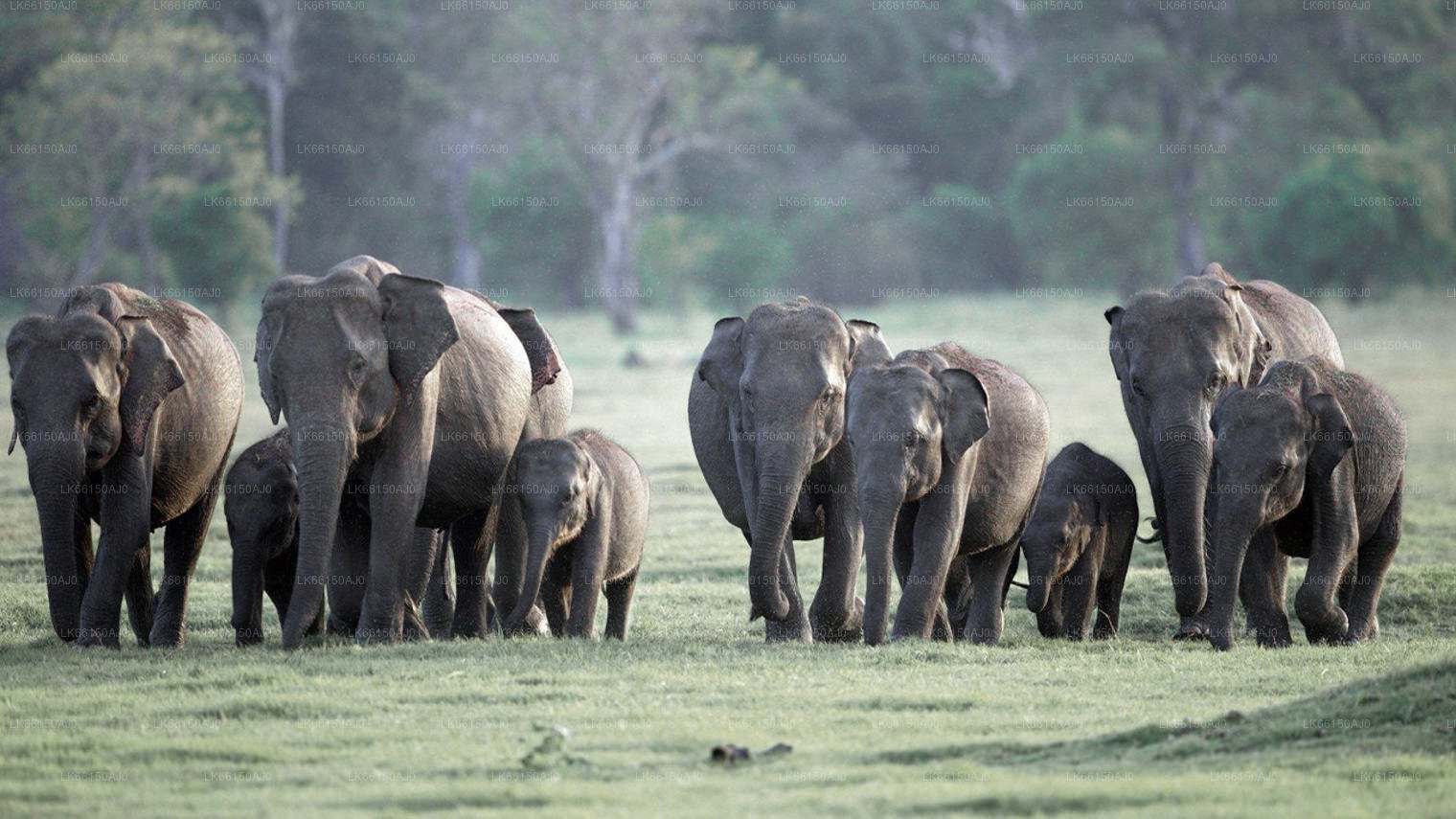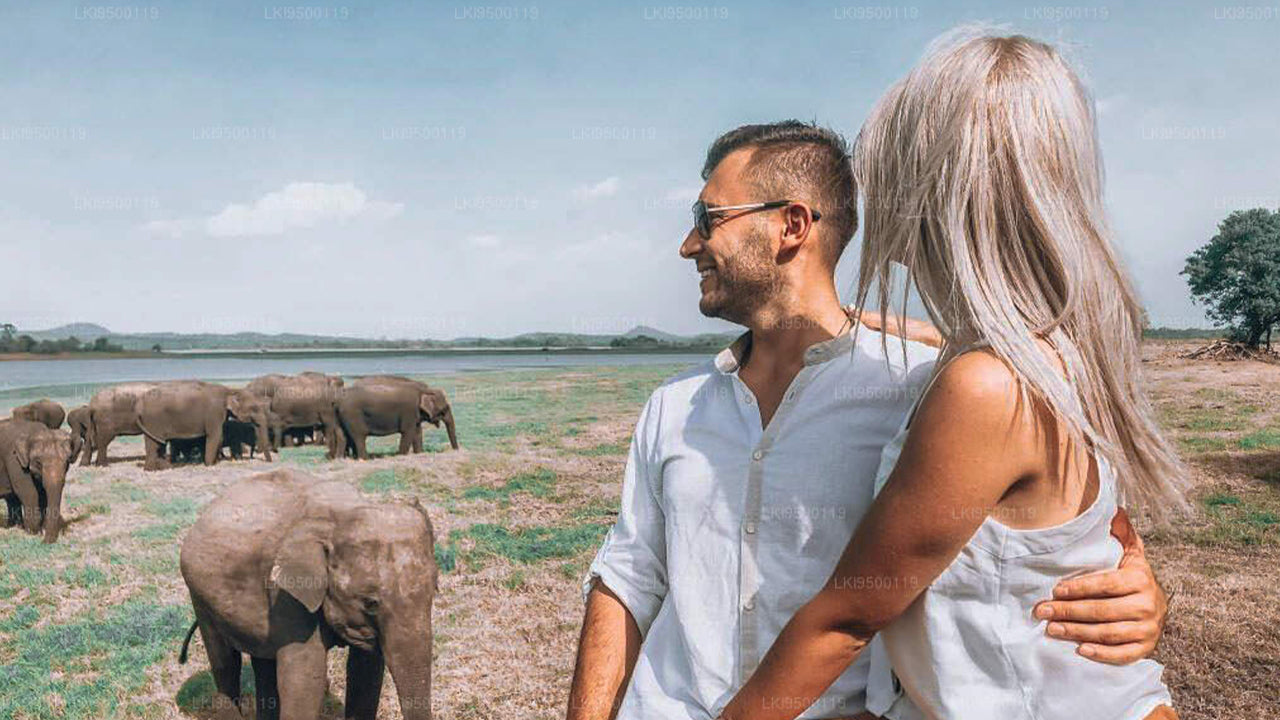
Minneriya-stad
Minneriya, gelegen in Sri Lanka, staat bekend om Minneriya National Park, een hotspot voor biodiversiteit en de thuisbasis van een grote populatie Aziatische olifanten. Het middelpunt van het park is de schilderachtige Minneriya Tank, die natuurliefhebbers aantrekt en een prachtig decor biedt voor natuursafari's.
Minneriya National Park
Minneriya National Park is located 182 km away from Colombo in the North Central Plains of Sri Lanka. The major city closest to Minneriya National Park is Polonnaruwa.
The renovated vast ancient Minneriya Rainwater Reservoir that irrigates the considerable area of the district of Polonnaruwa is the focal point of the Minneriya National Park.
Being part of the elephant corridor which joins up with Kaudulla and Wasgomuwa parks, Minneriya National Park gives the opportunity to see herds of Elephants throughout the year. May to October is the best period to visit Minneriya National Park in view of the famous Gathering of the wild elephants.
The Climate and Altitude
Minneriya National Park that covers an area of 8,889 hectares is of tropical monsoon climate: annual rainfall is about 1146mm and mean annual temperature is 27.5 centigrade. The altitude ranges from100m to 885m at the top of Nilgala peak.
Accommodation Options
Minneriya National Park has no accommodation facilities within its boundaries. But the cities close to Minneriya National Park-Sigiriya, Polonnaruwa, Habrana and Giritale- are clustered with luxury hotels and lodges.
Vegetation
The vegetation of the park consists of tropical dry mixed evergreen forests, abandoned chena lands, grasslands and wetlands. The open grasslands and old chena lands are dominated by the many species of small shrub.
The abandoned chenas are dominated by kukuruman (Randia dumetorum), keppettia (Croton sp.) wara (Calotropis Gigantea) and grasses i.e. katu-una (Bambusa bambos), wali indi (Phonenix zeylanica), illuk (Imerata Cylindirca) and pohon (Panicum Maximum).
The phytoplankton is dominated by Microcystis and Melosira.Among the large trees are palu (Manilkara Hexandra), Satin (Chloroxylon Swietenia), milla (Vitex Altissima), Kalumediriya (Diospyros Quaesita), halmilla (Berrya Cordifolia), weera (Drypets Sepiaria).
Mammals
Among the 24 species of mammals resident in the park are Elephants, Leopards, Sloth Bear, Spotted Deer, Sambar Deer, Wild Buffalo, Wild Pig, Grey Langers, Purple-faced Leaf Monkey, three species of Mongoose, Porcupine and Indian Pangolin. Pre-booked Minneriya Safari is the best way to see them all.
Amphibians & Reptiles
Among the nine species of Amphibians at Minneriya National Park are the endemic and endangered Slender Wood Frog and the Common Tree Frog. Of the 25 species of reptiles recorded in the park 8 are endemic including the Red-lipped Lizard. Water and Land Monitors are also seen here. The Mugger Crocodile can be seen near the tank. Many species of fresh water fish are found in the Minneriya reservoir.
Important Info:
Elephant Migration between Minneriya, Kaudulla and Hurulu Eco Park
There are three national parks in the close proximity within that region. They are the Minneriya National Park, the Kaudulla National Park, and the Hurulu Eco Park,. All of the three parks are immensely popular among locals and foreigners the world over for their large herds of elephants. Generally, each year during the months of July to September large groups of elephants are found in the Minneriya National Park and then they migrate to Kaudulla National Park during the months October to November due to high rains and lakes getting filled up. Then the elephants move on to Hurulu Eco Park for the final leg of their migration during the month of December to January.
Resources
Biodiversity Baseline Survey: Minneriya National Park
Other National Parks
Yala National Park, Udawalawe National Park, Minneriya National Park, Wilpattu National Park, Wasgamuwa National Park, Kumana National Park, Bundala National Park, Kaudulla National Park, Gal Oya National Park, Kalawewa National Park, Lunugamvehera National Park, Pigeon Island National Park, Hurulu Eco Park, Lahugala Kitulana National Park, Maduru Oya National Park
Over het district Polonnaruwa
Polonnaruwa is de op één na grootste stad in de noord-centrale provincie van Sri Lanka. De oude stad Polonnaruwa is door UNESCO uitgeroepen tot Werelderfgoed. Polonnaruwa heeft een rijke geschiedenis van veroveringen en strijd achter de rug en vormt terecht het derde element in de Culturele Driehoek. Gelegen op ongeveer 140 km ten noordoosten van Kandy, biedt Polonnaruwa urenlang eindeloos plezier voor liefhebbers van geschiedenis en cultuur, met talloze bezienswaardigheden van betekenis.
Een groot deel van de huidige ruïnes wordt toegeschreven aan koning Parakrama Bahu I, die veel koninklijke middelen besteedde aan stadsplanning, waaronder parken, gebouwen, irrigatiesystemen, enzovoort. De periode van zijn heerschappij wordt beschouwd als een gouden eeuw waarin het koninkrijk bloeide en welvarend was onder een visionaire heerser. De Parakrama Samudra is een gigantische tank en vernoemd naar zijn beschermheer. Het populaire koninklijk paleis van de koning, de audiëntiezaal omringd door prachtig gebeeldhouwde stenen olifanten en het badhuis weerspiegelen de superieure technische mogelijkheden van die tijd.
Over Noord-Centrale Provincie
De Noord-Centrale Provincie, de grootste provincie van het land, beslaat 16% van het totale landoppervlak. De Noord-Centrale Provincie bestaat uit twee districten: Polonnaruwa en Anuradhapure. Anuradhapura is het grootste district van Sri Lanka. De oppervlakte bedraagt 7.128 km².
De Noord-Centrale Provincie biedt talloze mogelijkheden voor investeerders om hun bedrijf te starten, met name in de landbouw, agrarische bedrijven en de veehouderij. Meer dan 65% van de bevolking van de Noord-Centrale Provincie is afhankelijk van basislandbouw en agrarische bedrijven. De NCP wordt ook wel "Wew Bendi Rajje" genoemd, omdat er meer dan 3000 middelgrote en grote tanks in de provincie staan. Sri Maha Bodiya, Ruwanweli Seya, Thuparama Dageba, het Abayagiri-klooster, Polonnaruwa Rankot Wehera en Lankathilake zijn enkele van de meest bezochte plaatsen in de Noord-Centrale Provincie.








